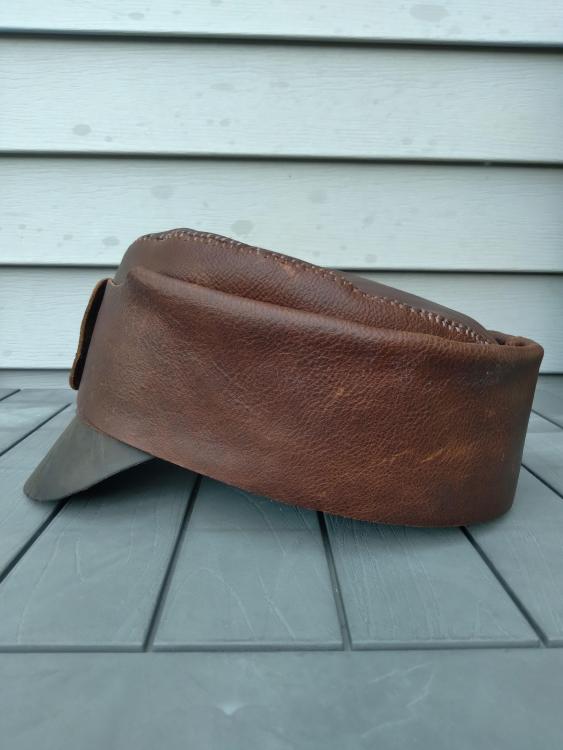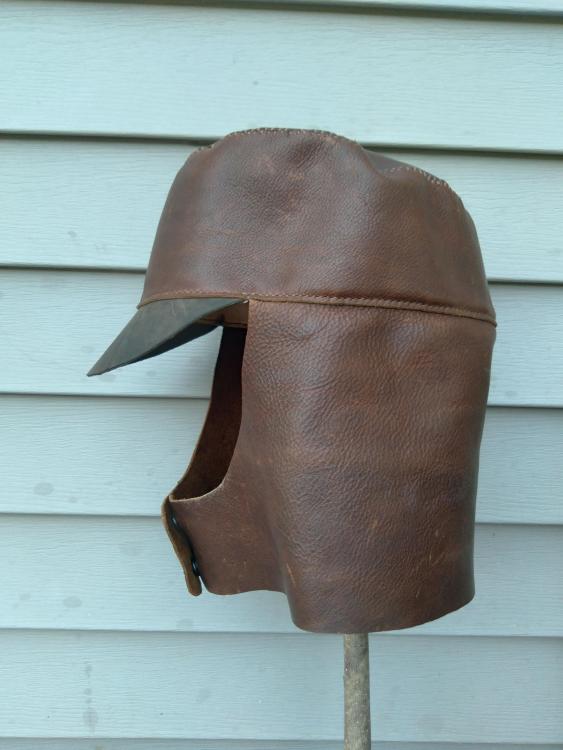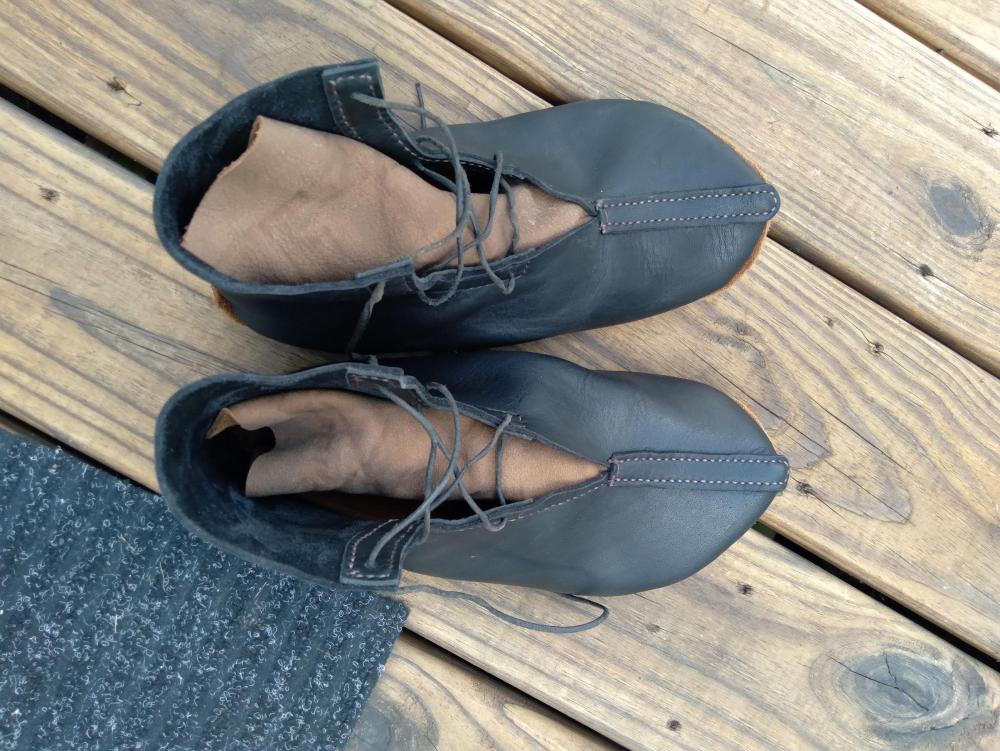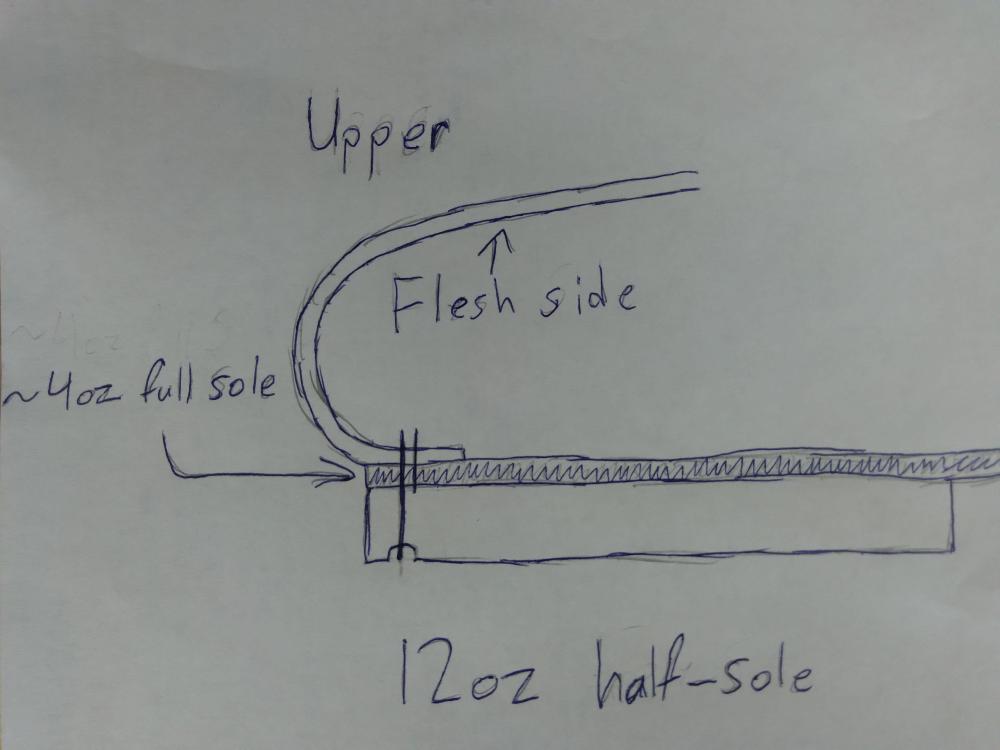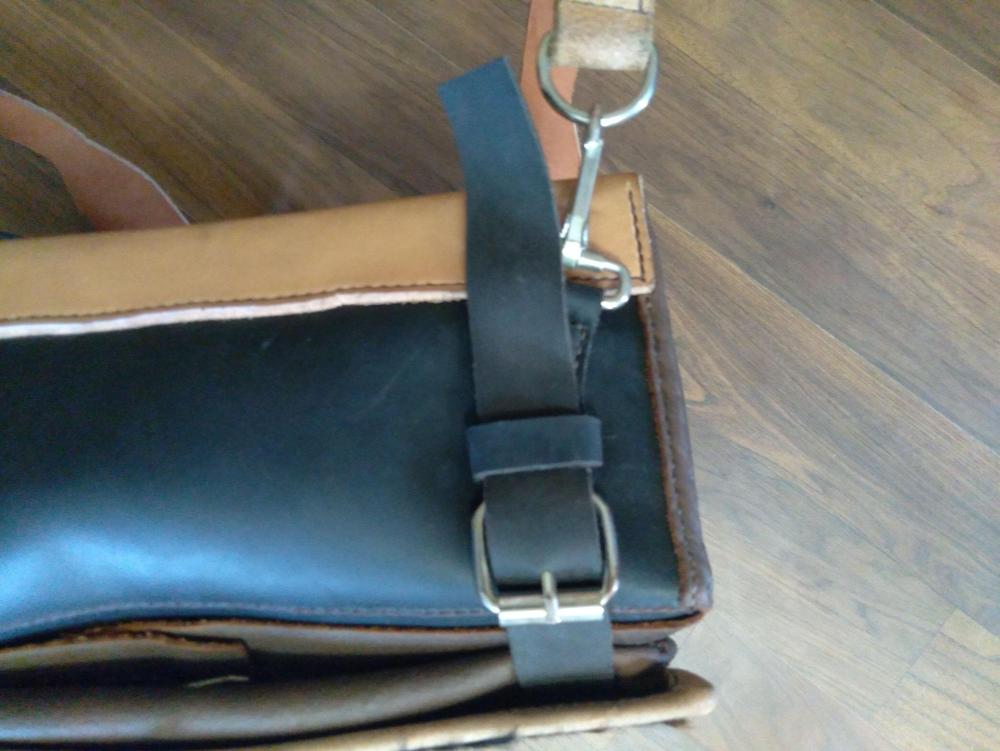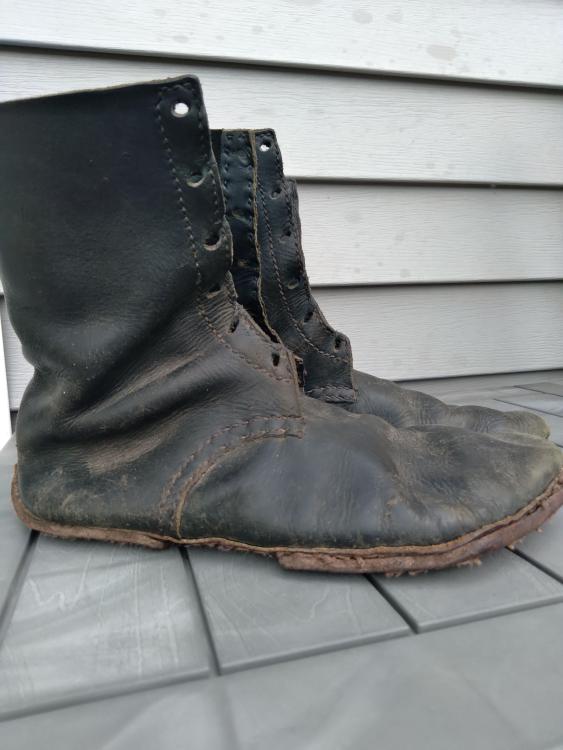
LeatherDoofus
Members-
Posts
23 -
Joined
-
Last visited
Contact Methods
-
Website URL
https://leatherworker.net
Profile Information
-
Gender
Male
-
Location
Indiana, USA
-
Interests
Independent, sustainable off-Grid living
LW Info
-
Leatherwork Specialty
Modified historical leather footwear
-
Interested in learning about
Practically anything and everything.
-
How did you find leatherworker.net?
tripped and did a faceplant on it
Recent Profile Visitors
The recent visitors block is disabled and is not being shown to other users.
LeatherDoofus's Achievements

Member (2/4)
-
Thank you for letting me know. I will do that in the future.
-
Yes they do. My cap does not have a liner, but it does have a cloth sweatband. Here is the cap with the neck cape folded up. I have several more photos from different angles, but i cannot post multiples at a time, so pictures will be coming in stages
-
For a while now i have been looking at old military gear and making modified leather versions. I made this cap with waxed full grain leather as the main body, and dark brown utility leather for the visor.
-
Handmade modified viking turnshoes
LeatherDoofus replied to LeatherDoofus's topic in Shoes, Boots, Sandals and Moccassins
Hello, Aventurine. My apologies for responding late. I used a six prong diamond point (diamond referring to the shape of the point) to punch the holes. Everything is hand stitched. I cut the softer leather with leather shears, and the sole leather with a box knife. I used a rawhide mallet for pounding. I stitched using waxed nylon thread for leather i got on Amazon, and canvas needles. If you would like i can take a picture of the tools. -
This is the video about making Hedeby style turnshoes i found that greatly helped me with my most recent shoes. Interesting fact. Hedeby used to be part of modern-day Denmark, but was taken in 1864 during the second Schleswig war by the German empire and is now, in German, Haithabu. https://www.youtube.com/watch?v=7U4mWyy7m-E And i am a him.
-
Handmade modified viking turnshoes
LeatherDoofus replied to LeatherDoofus's topic in Shoes, Boots, Sandals and Moccassins
-
Handmade modified viking turnshoes
LeatherDoofus replied to LeatherDoofus's topic in Shoes, Boots, Sandals and Moccassins
Thank you. I have some more pictures that i need to fiddle with before i can get them to fit the correct file size for posting. -
This is one hole i am not considering digging myself out of. I am not familiar with either the name or those sources, and will certainly take a look. I have learned that even though something may not be quite what i am looking for, i can combine it with other techniques to achieve a better design. And it is just good to learn more about the trade.
-
I am very happy and willing to share what experience i have with anyone who is interested. I hope that all of my answers have been clear. Thank you once again for your advice. There is so much that i have learned, i get excited and want to share it. Thank you very much for welcoming me to the forum in this manner. It has been very pleasant. I will be moving on first to the shoe-making forum, but will certainly still be keeping an eye out here to answer any questions.
-
In response to your question Mablung, basically i make a turnshoe with a soft sole. After it is turned, i wiggle my hands inside, and do a blake stitch using the holes already in the soft sole, securing the hard half sole to the bottom. I will have already punched holes in the hard leather, because it is impossible for me to push a needle through 12oz leather. I do all my sewing by hand. As i said, i have semi-retired those shoes in favor of another pair of shoes i recently made, addressing the issues of the first pair, mainly the exposed threads. A more complex and...er...interesting challenge where using the Hedeby turnshoe pattern greatly helped In response to your question AIZilla, probably around age 10, perhaps a little before, i have only worn barefoot shoes (shoes that have flat soles). I had to look online to see what supportive insoles look like. But i can give my best advice based off of what i do know. If you need them my recommendation would be to make a shoe pattern with them under your feet. An easy pattern to follow is the Hedeby turnshoe pattern. You take the piece of leather, center it on the back of your heel, and bring the ends up to the front of your foot, keeping the edges overlapped slightly for the front seam allowance. From there you can mark the pattern. Thank you very much CdK. I began making my own shoes, because at the age of about 15, in the middle of Indianapolis, there was nothing else i could think of that could immediately benefit me. Once i had made the first pair, which i liked, it was only natural for me to try and fix the problems. And that led me to what i make now. This is meant as an encouragement for anyone interested. If something interests you, try it. You may very well find, as i did, that you like it enough to the point where you want to improve it, and continue doing so. And who knows where that will lead you? I hope that you found this helpful and not confusing.
-
Advantages over regular turnshoes: With traditional turnshoes, they use a thinner leather for the sole, but it is a complete sole, meaning that when one part of it wears out (for me the area around the toes), i have to replace it, even if 90% of it is still in decent condition. With the half sole (one on the front, one on the back), because it is stitched onto a thinner, more supple full sole, i get much more flexibility. And because it allows me to stitch on a harder and much thicker leather, it lasts longer. Disadvantages: Because of the harder and thicker leather, i am unable to make concealed stitches. So as the leather compresses and/or wears down, the stitches are exposed to the ground. Concrete and gravel are among the worst surfaces for leather to be in contact with. And so the stitches wear out and i have had to re-stitch the soles on several times.
-
I stitched the upper, made of very oily boot leather, to the 4oz full sole, wrong side out. I then soaked it for a few minutes before turning it right side out. After it was turned, i grooved and stitched the 12oz leather half-soles onto the full sole.
-
-


